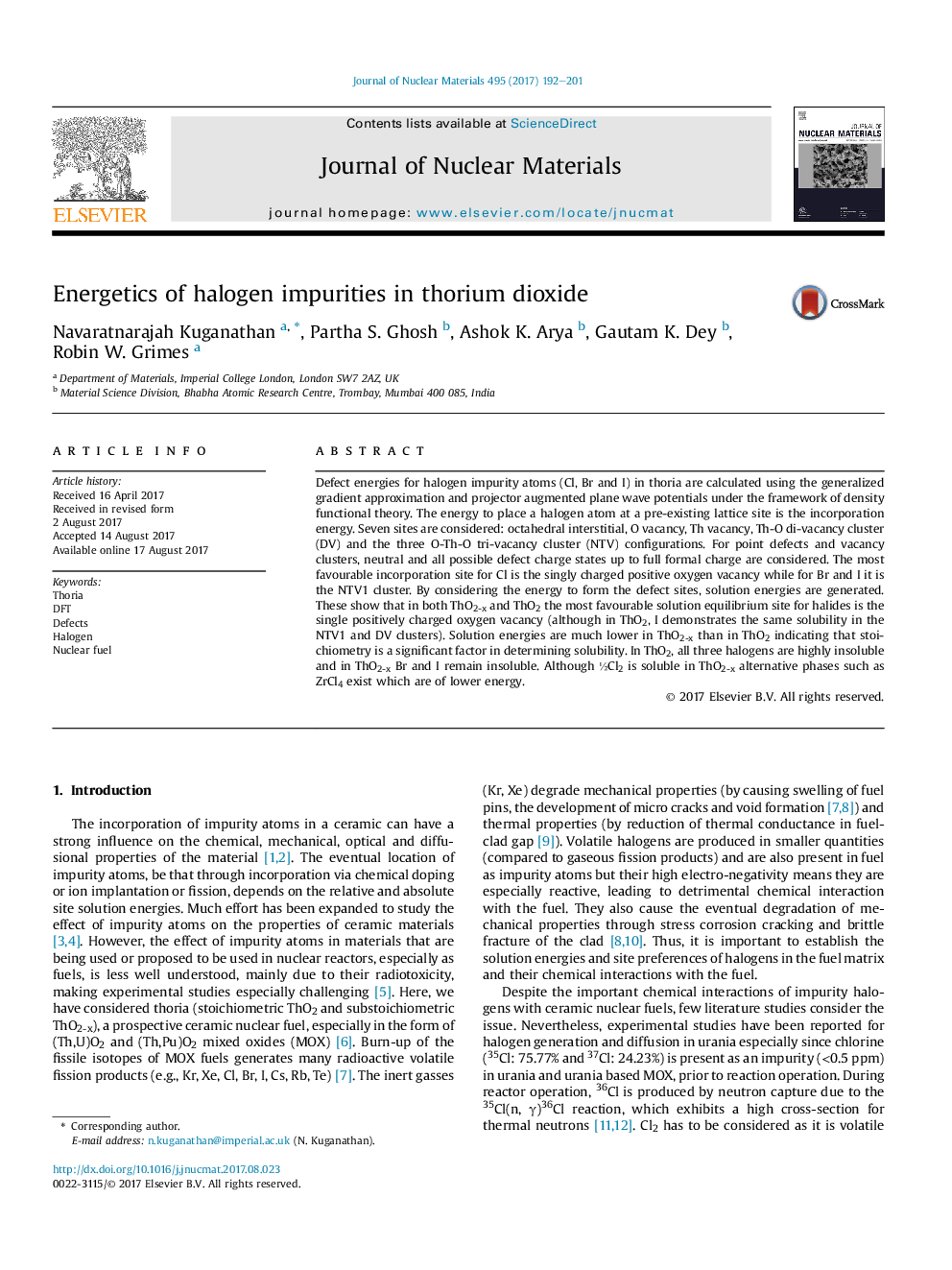| Article ID | Journal | Published Year | Pages | File Type |
|---|---|---|---|---|
| 5453855 | Journal of Nuclear Materials | 2017 | 10 Pages |
Abstract
Defect energies for halogen impurity atoms (Cl, Br and I) in thoria are calculated using the generalized gradient approximation and projector augmented plane wave potentials under the framework of density functional theory. The energy to place a halogen atom at a pre-existing lattice site is the incorporation energy. Seven sites are considered: octahedral interstitial, O vacancy, Th vacancy, Th-O di-vacancy cluster (DV) and the three O-Th-O tri-vacancy cluster (NTV) configurations. For point defects and vacancy clusters, neutral and all possible defect charge states up to full formal charge are considered. The most favourable incorporation site for Cl is the singly charged positive oxygen vacancy while for Br and I it is the NTV1 cluster. By considering the energy to form the defect sites, solution energies are generated. These show that in both ThO2-x and ThO2 the most favourable solution equilibrium site for halides is the single positively charged oxygen vacancy (although in ThO2, I demonstrates the same solubility in the NTV1 and DV clusters). Solution energies are much lower in ThO2-x than in ThO2 indicating that stoichiometry is a significant factor in determining solubility. In ThO2, all three halogens are highly insoluble and in ThO2-x Br and I remain insoluble. Although ½Cl2 is soluble in ThO2-x alternative phases such as ZrCl4 exist which are of lower energy.
Keywords
Related Topics
Physical Sciences and Engineering
Energy
Nuclear Energy and Engineering
Authors
Navaratnarajah Kuganathan, Partha S. Ghosh, Ashok K. Arya, Gautam K. Dey, Robin W. Grimes,
